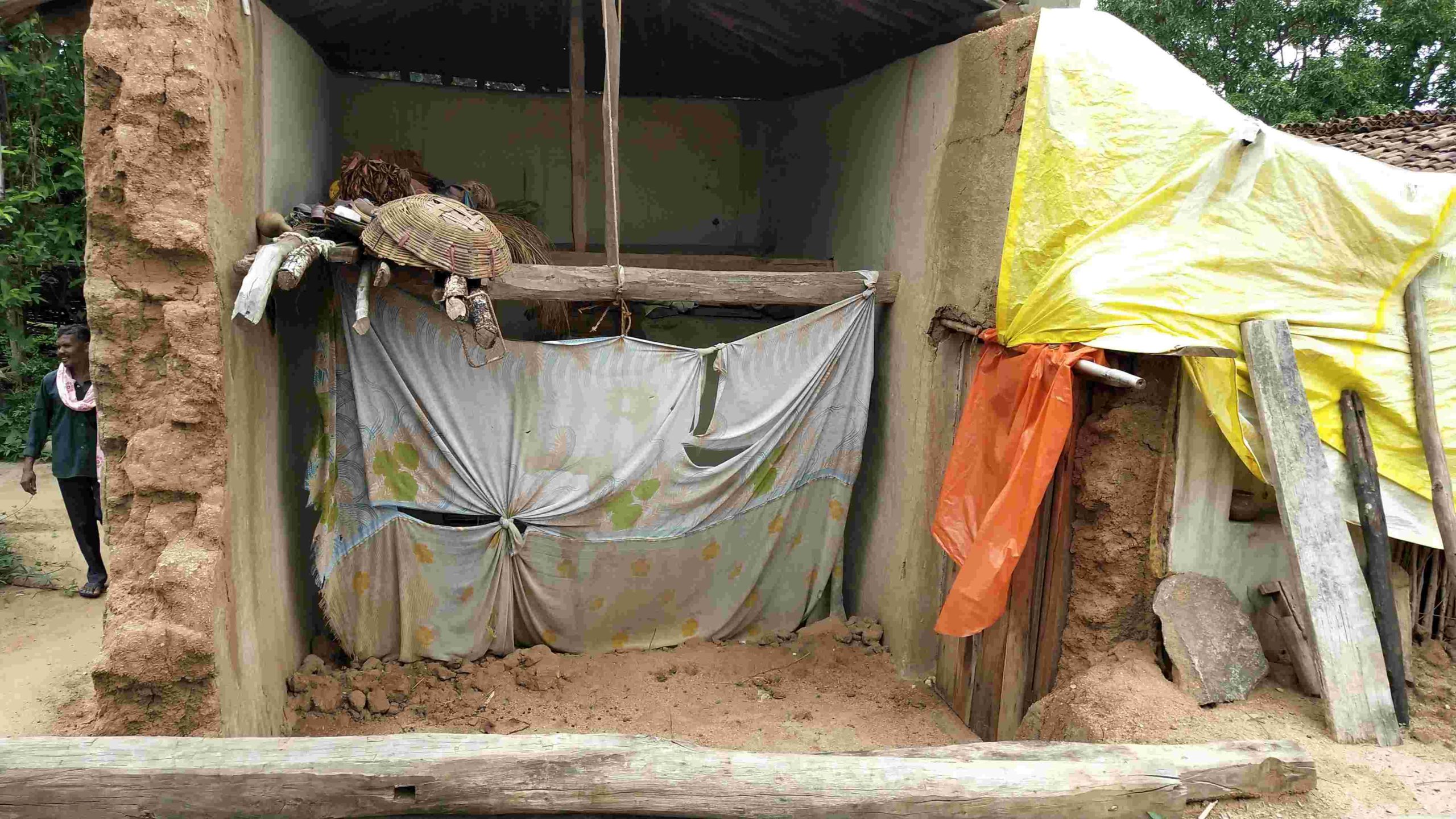A year on, Chhattisgarh villagers still await permanent houses under the PM Awas Yojana
Last year, beneficiaries of PM Awas Yojana in Chhattisgarh received the first instalment to make pucca homes. They haven’t gotten any funds since then and still await the promised houses.
Kanker, Chhattisgarh
On receiving the first instalment under the Pradhan Mantri Gramin Awas Yojana (PMAY-G) in June 2019, the rural poor of Kanker district in Chhattisgarh thought they would no longer have to suffer the harsh weather without a solid roof above their heads.
The first instalment of the scheme houses was released for 4,264 out of 4,500 in Bastar division of Chhattisgarh. It was towards preparing the foundation. Most of the beneficiaries eagerly pulled down their mud houses and laid foundations for pucca (permanent) houses.
A year has passed since the first instalment. These beneficiaries haven’t received the next instalments, and the houses they started building are far from completion. Now, some live in a rented accommodation, others struggle to survive in the open.
“I was included in the beneficiary list of the scheme in June 2019. Earlier, my house had been kutcha (temporary) and dilapidated but it was livable,” Jungli Bai of Kirgapati village in Kanker district of North Bastar, Chhattisgarh told Gaon Connection. “I pulled down my house a year ago, on receiving Rs 25,000 from the scheme. Due to lack of money, my house is still unfinished. The rains are approaching, so I have covered a room with some sheets. I do not know when my house will be completed,” she lamented.
A few borrowed money from relatives to finish the house and are now in debt. This is the situation in almost every district of Chhattisgarh. Ranjita Kureti of Mandari panchayat began constructing her new house under PMAY-G but chose not to wait an entire year for the rest of the money. “I took some loan from my relatives, borrowed cement and other construction material and built my house,” Ranjita told Gaon Connection. She is now desperately waiting for her instalments to repay the money she borrowed.

Each of the 4,015 beneficiaries of the scheme in North Bastar’s Kanker district are to get Rs 1.3 lakh in four instalments. Last September, Rs 25,000 was put in their accounts as the first instalment. Even after nine months, the beneficiaries are awaiting the second instalment.
“They told us to pull our house down saying we’d celebrate Diwali in a new house. I have a pair of bulls. Their shed was also demolished,” Sonu Ram of Salhebhath village in Kanker Development block rued. “Today, it is going to be a year, only the foundation has been laid. We are facing a lot of difficulty in living here. We are only two members but we have to live confined in one tiny room, and we are scared too,” he said.
PM Awas Yojana: Selling dreams
The Pradhan Mantri Awas Yojana (PMAY) is an ambitious social-welfare scheme launched by the Government of India in 2015. It aims at providing affordable housing loans to the poor in the country. The scheme aims to facilitate the construction of more than 20 million houses in urban and rural India before March 31, 2022.
In Chhattisgarh, the central government provides 60 per cent of the funding for PMAY and 40 per cent of the share is footed by the state government.
The Pradhan Mantri Gramin Awas Yojana (PMAY-G) is an extension of PMAY and aims to provide low-cost housing to the rural people in India. It is for BPL (below poverty line) families who are houseless or financially weak to afford a house.
Under the Pradhan Mantri Gramin Awas Yojana, people in rural areas of India get three per cent concession on interest rates on housing loans of up to two lakh rupees. The loan can be availed either for constructing a new house or for expanding the existing one. The housing loan assistance is sent directly to the beneficiaries’ account in instalments.
The estimated total expenditure of this scheme is Rs 60,000 crore. Presenting the budget in July 2019, Finance Minister Nirmala Sitharaman had announced that 1.95 crore houses will be provided to eligible beneficiaries in the second phase (during 2019-20 and 2020-21) of the scheme.

The Pradhan Mantri Gramin Awas Yojana helped a large section of the rural poor realize their dream of a permanent shelter but it has its share of drawbacks. It has often been observed that after the first installment, there are substantial delays in receiving the second and third installments.
“They told us to pull our house down saying we’d celebrate Diwali in a new house. I have a pair of bulls. Their shed was also demolished,” Sonu Ram of Salhebhath village in Kanker Development block rued. “Today, it is going to be a year, only the foundation has been laid. We are facing a lot of difficulty in living here. We are only two members but we have to live confined in one tiny room, and we are scared too,” her said.
“Eight houses were to be built under Pradhan Mantri Awas Yojana in the panchayat. All are still incomplete. The officers say allotment is not happening. The villagers taunt me every single day, reminding I made them pull down their houses,” Dasrath Kureti, sarpanch (chief) of Mandari panchayat told Gaon Connection. “It is not their fault. They question me since I represent the village. The situation in adjoining villages under the scheme is the same,” he said.
Having done that, people are approaching the district panchayat office, every day, to demand the second installment but are unable to get any satisfactory response.
“The state’s nodal account does not have any money. The proposal has already been made and dispatched from the district. As soon as the allotment is released, we will forward it to the beneficiaries,” Anil Gota, PMAY-G officer at Kanker district panchayat informed Gaon Connection.

